

You're reading The Audiencers' newsletter #48 sent out on October 2nd, 2024. To receive future newsletters straight to your inbox every two weeks, sign up here.
In today’s newsletter:
- Lessons on acquiring and engaging young audiences: from the newsletter-only German Media start-up
- User needs: Are you producing content that actually contributes to your digital reader revenue model?
- Live demo of Poool Engage: the solution to dynamically engage, onboard and retain readers.
- “Churn is reduced by 22% when a subscriber is signed up to a newsletter”
- To add to your reading list
Lessons on acquiring and engaging young audiences
How can you acquire and engage younger audiences? morningcrunch seems to have nailed it…
The newsletter-only media brand helps younger audiences to get informed on a topic in under 5 minutes each morning. Launched by ex-Burda Gregor Becker and ex-Ringier Paul Ostwald in 2023, the brand already has over 50,000 subscribers and a growing collection of daily newsletters, including markets crunch (on daily business news), deals crunch (on Private Equity, mergers & acquisitions) with others to follow soon.
What can the wider industry learn from their success?
> Adapted content & formats, including smart bullets, “Why it matters” sections as well as pop-culture references, humor and memes that resonate with young readers
“It’s also about the angle. We don’t just report what’s going on but how it’s impacting young readers and their realities.”
> Give freedom to the brand, even if you’re launching under an existing one
“Ringier did a great job with Izzy projects, and FT with Sifted. A completely new brand means freedom in playing around with the brand proposition, acquiring an entirely new audience, not worrying about risks of new/alternative acquisition channels, all whilst having the benefit of expertise from the parent brand and sister companies who are one step ahead.”
> Don’t be afraid to be different from traditional media
With acquisition channels such as Quora, Reddit, influencers and meme pages, plus the jokes & memes inside the content itself, attracting and engaging younger readers won’t be done in the same way as for other markets. And this ‘lighter’ format doesn’t at all mean news quality needs to be sacrificed. Paul suggests keeping the banter to a few, clearly marked, sections (e.g. Memes at the end of the newsletter)
> Full interview on The Audiencers
User needs: are you producing content that actually contributes to your digital reader revenue model?
DRIVE research has found that 85% of articles are what they call ‘ghost’ articles, meaning they get less reading time than they take to produce….
Assuming that the average article takes 5 hours to produce, less than 5 hours of Media Time would be considered a ghost.
According to DRIVE, the average is between 5 – 50 hours Media Time, and the star articles reach 50+ hours.
In short, these ghost articles don’t meet the expectations of readers and so don’t contribute to a business’ digital reader revenue model.
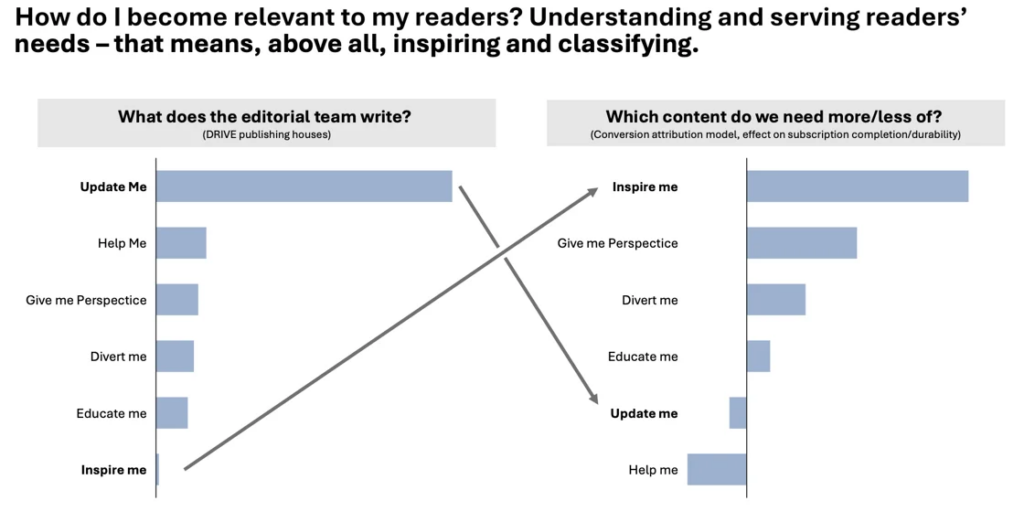
One solution: implementing user needs models
What research has suggested is that publishers are producing too many “Update me” articles (under the user needs model) that don’t perform as well in terms of engagement and conversion rate. Instead, “Inspire me” content, which is primarily positive, constructive, emotional and inspiring, has the biggest impact. According to DRIVE, these are often about people or projects that have achieved something outstanding.
Despite being longer and taking more time to produce, these stories have the best Media Time and conversion rate, meaning editorial resources are better invested in these stories than “Update me” content.
Two articles to dive deeper into the topic of user needs on The Audiencers:
-> Dmitry Shishkin’s user needs 2.0 model, explained by Khalil A. Cassimally
-> Lars K Jensen on how implementing user needs is cultural change
Join our live demo of Poool Engage, with case studies from L’Équipe & Jeune Afrique Group
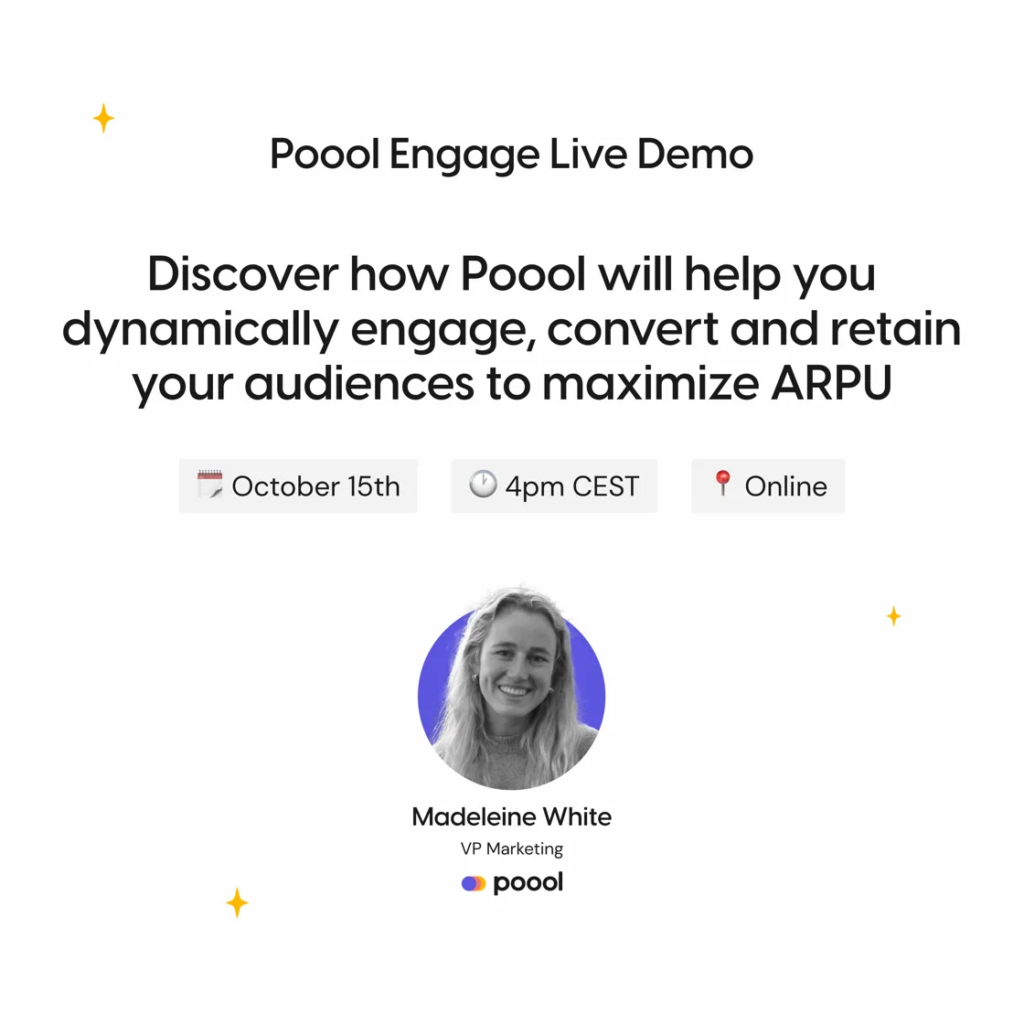
Founded in France and now with a UK edition, Maddyness is the go-to magazine for entrepreneurs and innovators.
Having first developed a loyal, engaged community of readers, Maddyness recently launched their premium offer, Maddy+, including a one-time-payment lifetime offer, aimed at their most dedicated readers.
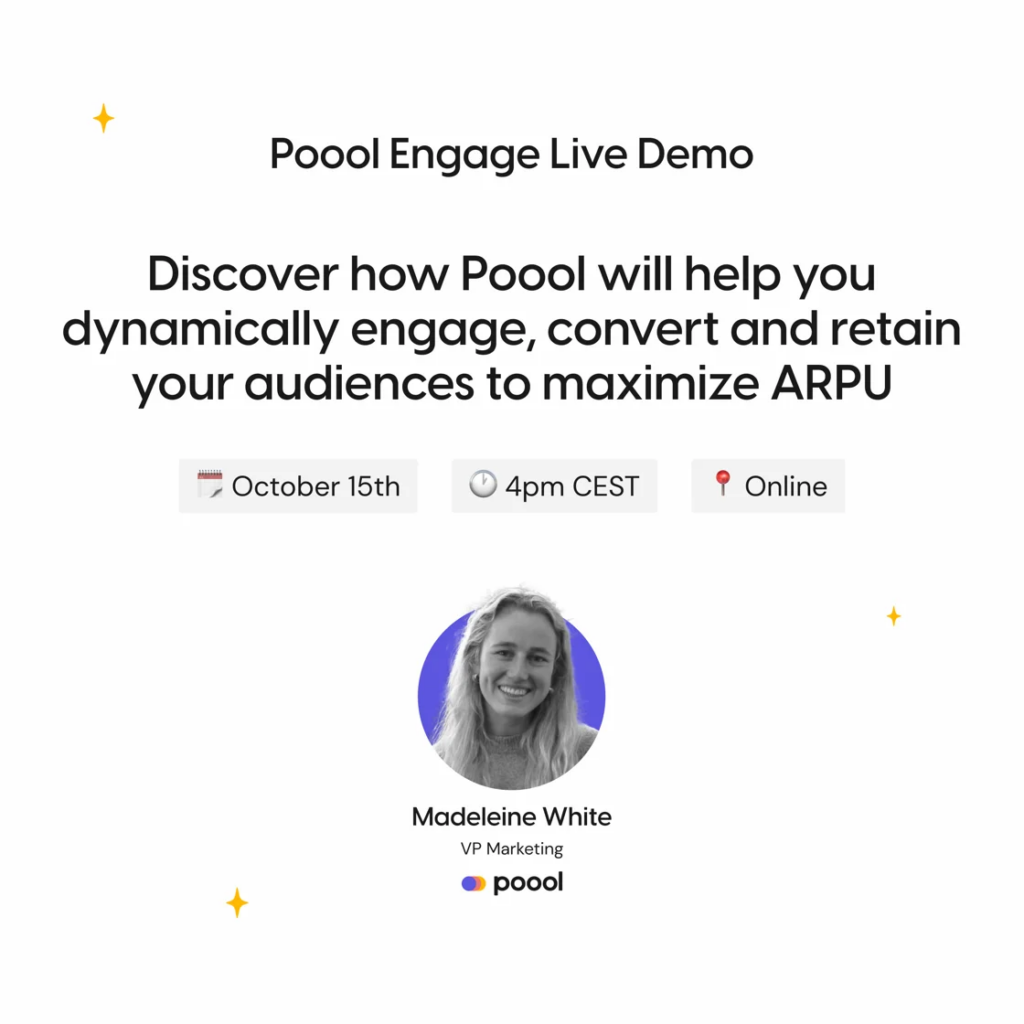
> Register for the live demo and Q&A with me here!
“Churn is reduced by 22% when a subscriber is signed up to a newsletter”
According to data from El Pais, churn is reduced by 22% when a subscriber is signed up to a newsletter
At The Financial Times, research has proven that 18% of engaged subscribers would be disengaged if it wasn’t for the newsletters. And they’re also hugely impactful when it comes to lifetime value.
So how are publishers successfully convincing new subscribers to sign up to a newsletter within the first minutes of converting?
> Highlight which newsletters are available to subscribers only, proving the value this reader now has access to, like The Independent
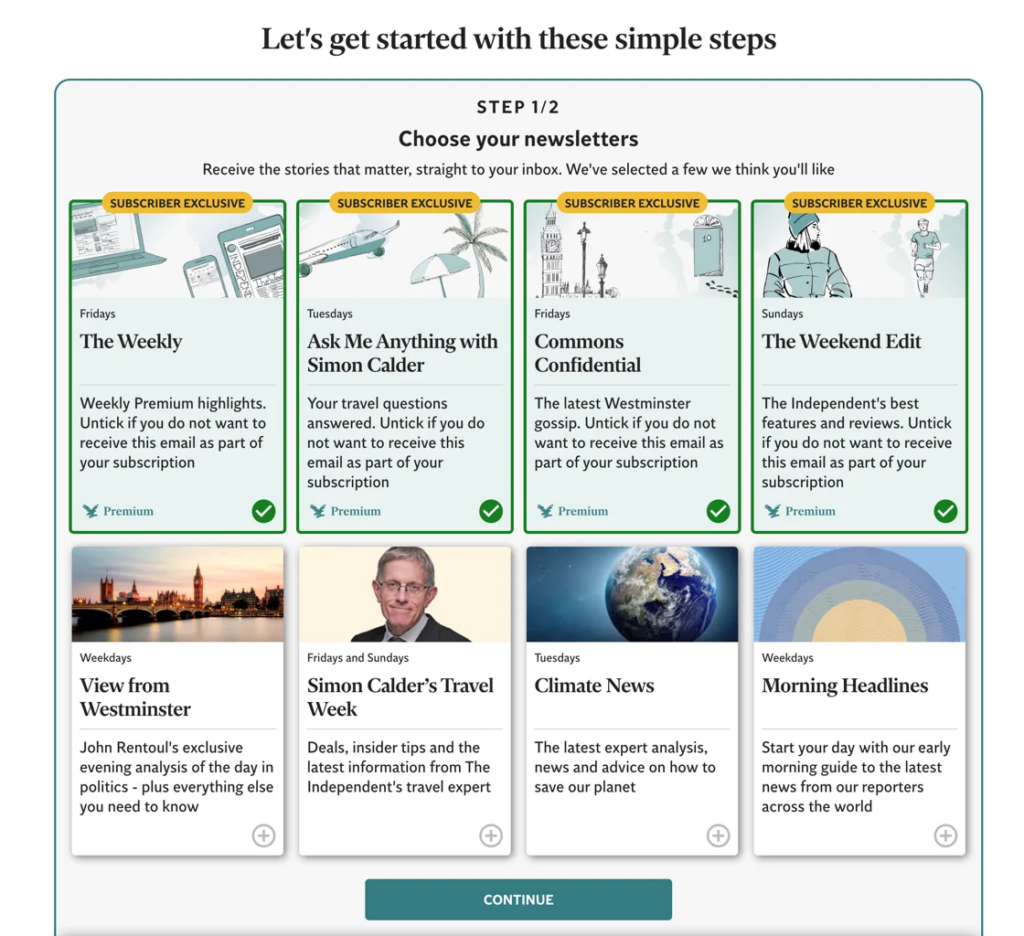
> An image, a clear title, information on when you’ll send the newsletter & how frequently
> Make sign up easy – a single click via a check box is often the preferred method, some pre-select boxes for some of the more general newsletters
> Quality not quantity – you don’t need to feature all newsletters but combine popularity (subscribers & usage) and impactfulness (engagement post-usage & retention rates) to promote the newsletters that add value to your business
> Financial Times have build bundles of content to allow a new subscriber to sign up to all newsletters, podcasts and alerts related to a single topic in one-click
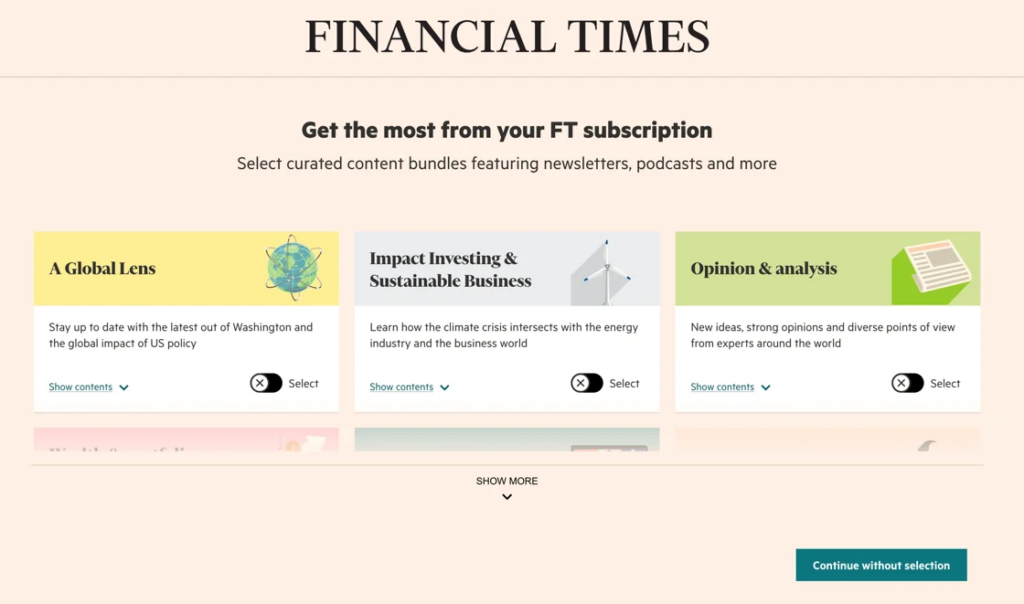
> Personalize where possible, even if it’s as simple as adapting to the reader’s location, like The New York Times: “start your day in Europe”
> Pop-ups or banners on content, promoting a newsletter on the same topic, like L’EQUIPE ensuring not to frustrate the reader by defining display conditions – find more on L’Équipes retention model here

To add to your reading list
- How to analyze subscription data: interview with data specialist Ana Moya (ex. Handelsblatt Media Group and Funke)
- How Business Insider’s AI-based paywall strategy increased conversions by 75% (pst, did you know you can do this with the Poool x Sophi.io connection? Drop me a message/reply to this email if you’re interested in hearing more)
- The Washington Post tests flexible “one week access” payments
- The retention-acquisition connection: what happens if you don’t (or do) invest in retention
The Audiencers’ newsletter: from professionals to professionals
Sign up to our newsletter – real-life examples, expert points of view and inspirations from publishers around the world to help you do your job better. Sent every two weeks.


